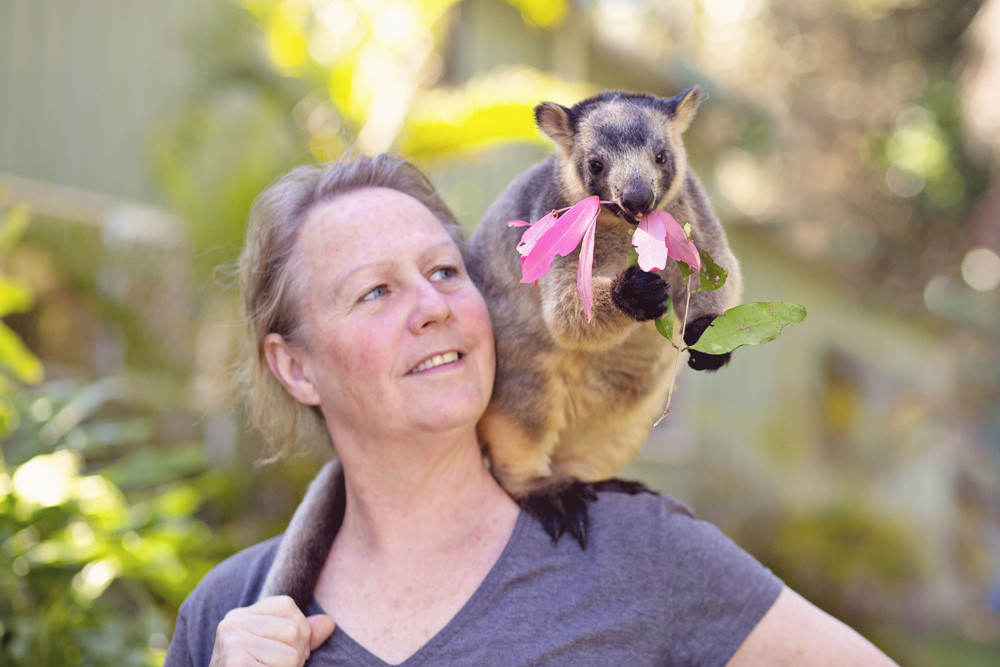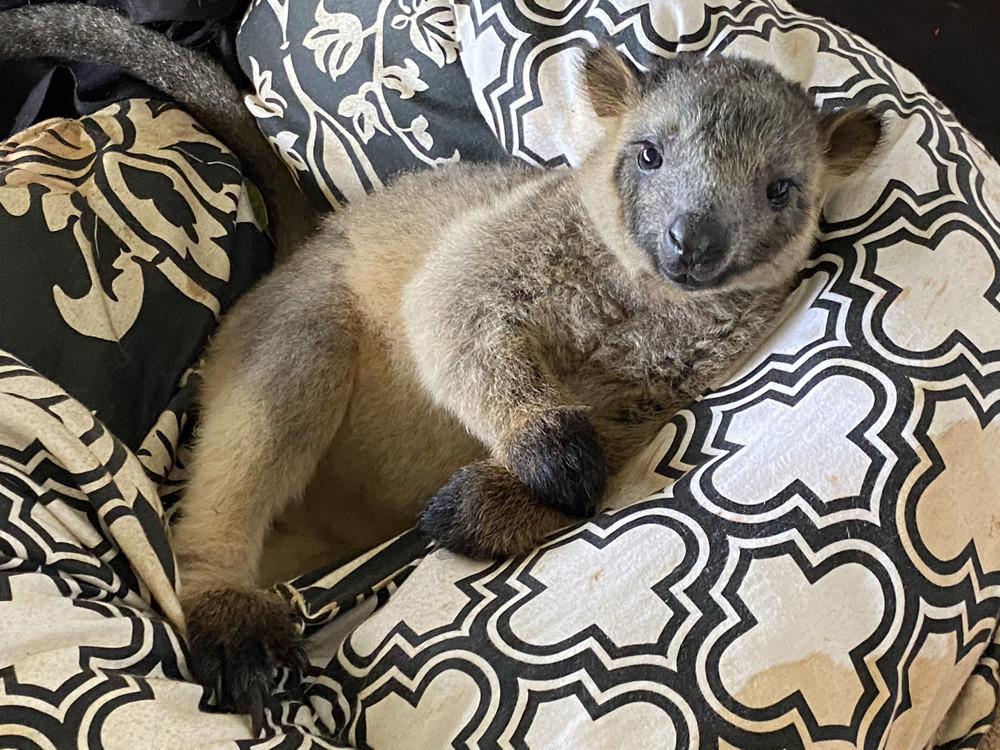Community & Business
23 May, 2023
Be aware of tree roos
THE Atherton Tablelands is home to one of the rarest species of tree kangaroo, the Lumholtz's tree kangaroo, and Tree Roo Rescue and Conservation Centre is bringing awareness to this furry marsupial during Tree Roo Awareness Week this week.

The week of awareness is centred around Tree Roo Day, which was on Sunday 21 May, and gives people a chance to reflect and learn about the endangered species.
Founder of the tree roo centre Dr Karen Coombes (PhD) has been hosting weeklong events for a decade now but Covid and a bout of illness has meant this year will be a little smaller than usual.
“I was planning to do something huge but this year we will just be doing a few things on our socials,” she said.
“We just want to push to get more awareness about the Lumholtz's tree kangaroo out there because so many people who live here (on the Tablelands) have no idea that they actually exist.”
Lumholtz's tree kangaroos can be found from the hinterlands of Cardwell through to the Tablelands and up into the Daintree area and are threatened by deforestation, climate change and dog attacks.
Dr Coombes hopes that through education, locals will be more cautious of the animals which roam both during the day and night.
“A common misconception is they are nocturnal, but they are active all throughout the day and night,” she said.
“I’ll have a lot of friends say to me ‘I keep my dog in during the night so they don’t chase them’ but (the tree roos) also come out during the day and then they will say ‘oh, I should keep an eye on them during the day’.”
Throughout the week, Dr Coombes will be keeping people informed about all the types of tree roos throughout Australia and Papua New Guinea on the Tree Roo Rescue and Conserva-tion Centre Facebook and Instagram pages.
She will be selling cookie kits and other merchandise with all money raised going directly into conservation and research.
To donate, volunteer or to purchase merchandise, visit www.treeroorescue.org.au/
If you believe you have hit a tree roo with your car, check is there is a joey in the pouch and call Dr Coombes on 0427 790 694.
Toxic leaves reason for strange sightings
WHEN there is a tree roo in distress, the Tree Roo Rescue and Conservation Centre is there to help but lately, Dr Coombes has noticed a large number of visually impaired rescues ending up in “not-so-normal” places.
“We are rescuing them in strange places like hardware stores, toilets in café, art classroom in high school, noisy workshop in service station, even just in someone’s yard a long way from rainforest. Not normal behaviour,” Dr Coombes said.
After taking the tree roos to a specialist veterinary ophthalmologist, Dr Coombes found that the majority of the animals that were being rescued from strange places had damage behind the eye, brain and optic nerve.
For the past 10 years, she has been investigating why this is the case, with toxins within their leaves being the suspected culprit.

“I believe that the already toxic leaves of the rainforest are more highly concentrated from lack of water in very dry and hot times over the past 10 years due to drought and climate change,” she said.
“We get less rescues in the wetter years. These toxins are either causing the brain and optic nerve damage we have found (from samples we have sent to a wildlife veterinarian pathologist at Charles Sturt university Dr Andrew Peters from tree kangaroos that have been examined and found to have sight issues) or it is affecting their immune system to allow something else to cause the damage. As it is nerve damage, it is irreversible.
“We have been researching the cause for 10 years now and have already ruled out some of the more common causes of blindness in macropods.”


